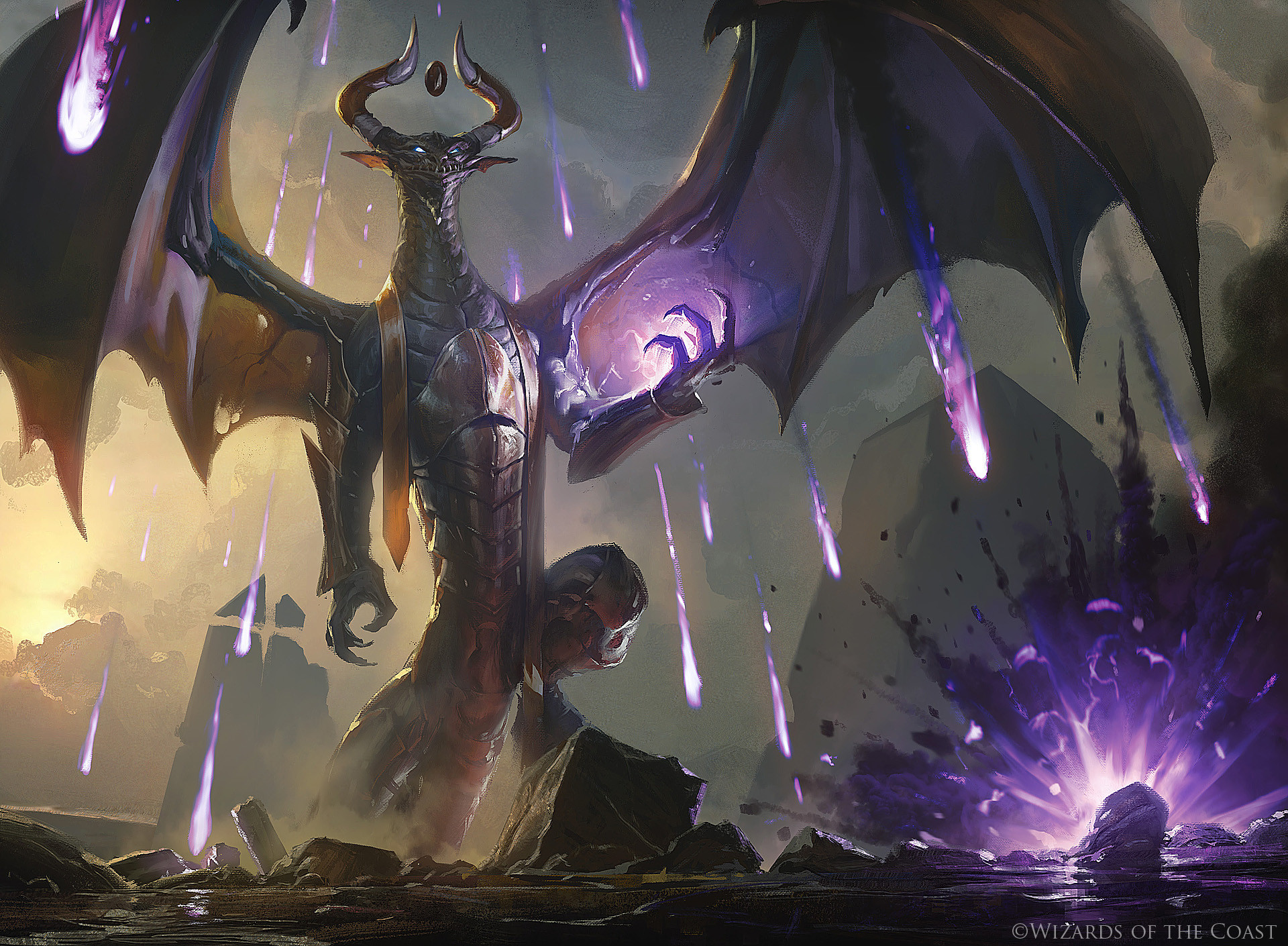 |
| It never looks anything like this. Credit Greg Rutkowski |
I've been dabbling with the Magic Words spell system for a while. Spell research in Die Trying v.1, entirely supplanting traditional GLOG casting in Die Trying v.2, humourously effective in a Grimoire Generator, and soon to supplant the list in my Wand Generator (as soon as I figure out how to swap out the recovery mechanic). It's been funny, challenging, thought-provoking and player engaging, but as I try and move towards something vaguely usable to someone other than me, I've hit a snag: how the hell do I explain how to make spells to someone?
To make sure we are all on the same page, a brief overview - magic words are taught, stolen, eaten or invented, combined into spells of two or more words, then cast using Magic Dice (MD, d6s). All of their numerical values is represented by the [sum] of all the MD rolled, and/or the number of [dice] used in the spell. Wizards can learn spells from a Shared list of generally useful words like "Symbol", "Conjure", "Transmute", from a list of school-related words, or from the full list of 1000 or more. If you want an example, try the Die Trying -> Cheap Tricks generator on the sidebar. You'll get a wizard that comes equipped with one of each of the previous sets.
Magic words are often more symbolic than literal. "Evil" + "Protect" becomes Protection from Evil without any fuss. "Transmute" + "Mud" + "Meat" becomes Transmute Mud to Meat. Prepositions are free, as are a variety of prefixes and suffixes. Twist and turn the spell until it sounds right, reorder it. "Word" becomes "Power Word", don't question it. Working backwards, traditional single-word spells like Grease or Sleep become Conjure Grease and Word: Sleep.
Wizards can freely swap and adjust their spells, they can transmute Mud to Meat as easily as they can transmute Meat to Mud. Since they are given a lot more flexibility than normal, MD in Die Trying do not return to the caster on a 1-3, they are always expended.
Spells might come from a generated scroll or wand, or invented wholesale by a player working with the limited tools they've got on hand. Whatever the case, Die Trying does not (and could not) come with a spell list. It's up to the DM to work out what the spell does, how it works, and what weird side-cases could be used, at short notice, likely in-game. This is a tall order, and something I hope I can help with.
What does the spell do?
Firstly, a lot of spells are justSecondly, go with your instincts. Better yet, go with what the player(s) think should happen. Common sense will win you the day, and most of the time, players will only try out word combinations with some idea of what the spell will do. If they are malicious and put together bizarre combination of words in attempt to trip you up or trick you, firstly, why are you playing with them? Secondly, you have my full permission for the spell to blow up in their face. Don't mess with magic, because the magic will mess back. That said, magic words are a fun and funny system. Don't punish players that experiment in a clever manner. Do explode cheeky players, because that is just as funny.
 |
| Exactly like this |
What does the spell do exactly?
Determining the numerical effects of a brand new spell can be scary. If it is under- or over-powered you might end up with a busted game or a disheartened player. That said, there are a lot of tools on your side. The Magic Dice system is tactile and wonderful to use and re-use. If in doubt, the spell deals [sum] damage and has a duration of [dice] rounds.A lot of trad games have spells that are like lockpicks: they are a standardised and reliable solution to one well-constrained problem. You want spells that are like daggers. Lockpicks do one thing really well, daggers can also be used to pick locks, but not as reliably as lockpicks. This is fine, because daggers can also be used to:
- Stab things
- Stab things from far away, via throwing
- Pry apart things
- Cut up your dinner
- Perform surgery
- Etch your name into walls
- Stir paint
- Cauterise a wound when heated
The spells you design should be daggers, not lockpicks. They should solve one problem pretty well, but not perfectly, and have a lot of weird edge-case usage. If you've played Fifth Edition, you have probably experienced the feeling of "can I use X to do Z instead of the intended usage Y? Because A and B and C and also D" and getting the answer of "*flips through the PHB and DMG for fifteen minutes* no."
Finally, don't panic. The restrictions on spells mean they can't be spammed as much as you might think. Sometimes wizards can just wave their hands and solve a problem, and that's ok! Most of the time, they can't. If a spell is over- or under-powered, have a frank and open discussion with the player about the issue, and figure out what kind of changes might need to be made. Maybe the spell is an affront to the universe, and it slowly seals over some of it's power like a scab. Maybe the spell is just so weird and new that it takes the wizard some time getting used to it to unlock the full power.